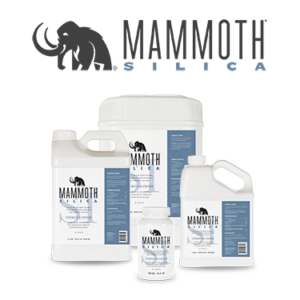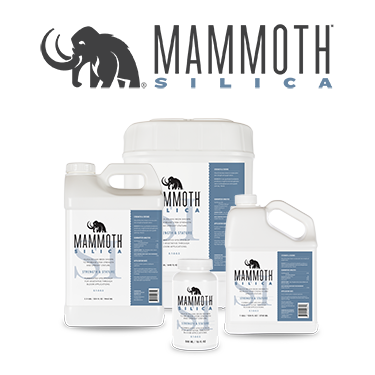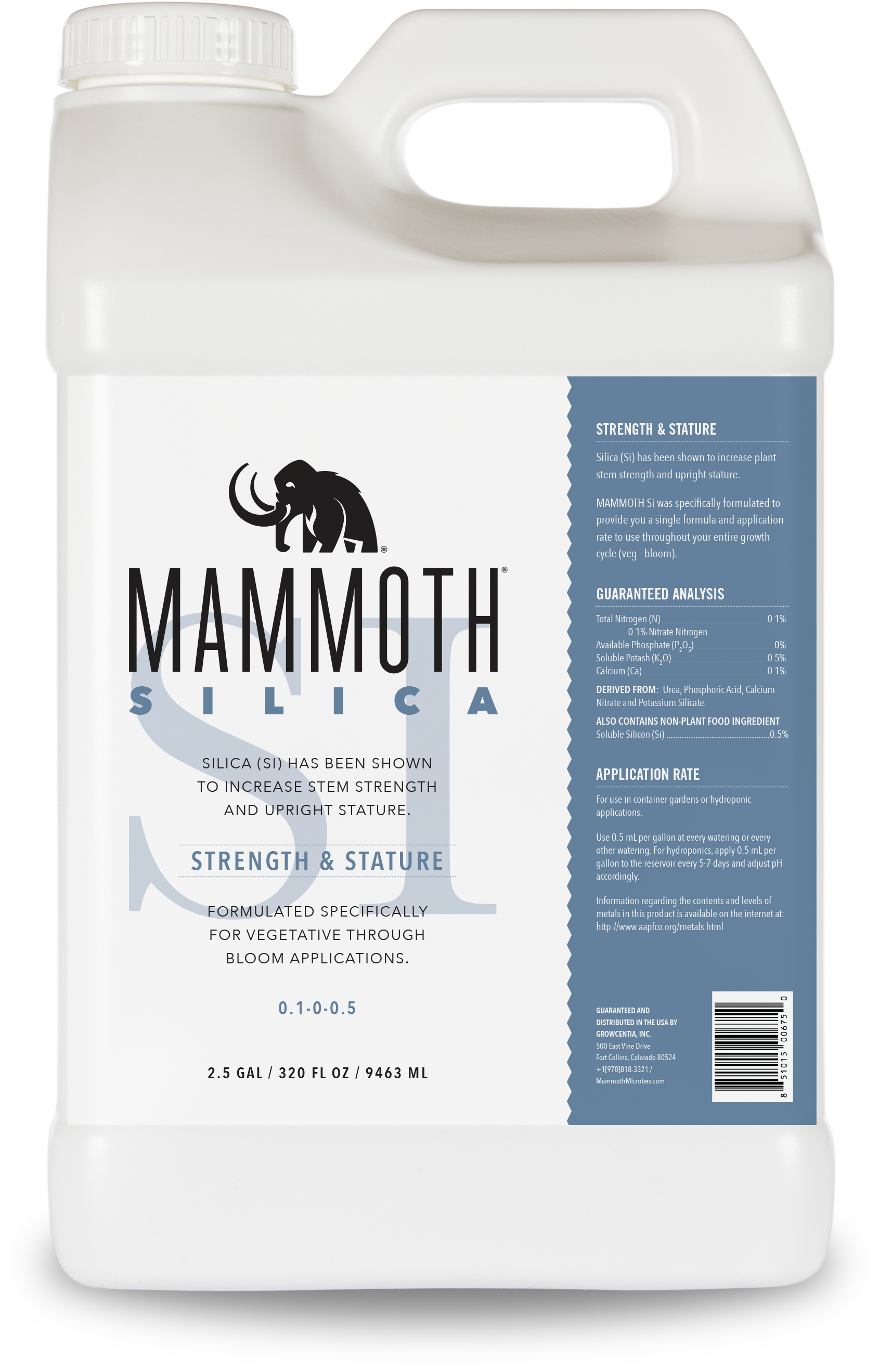EASY TO MIX
ENVIRONMENTAL STRESS REDUCER
ALL GROWTH STAGES
Mammoth Silica® increases plant strength and stature and guards against environmental and pest pressure during all plant growth stages. Mammoth Silica is easy to mix and apply.
Application Directions
For houseplants, mix 1 tsp. (5mL) with one gallon of water and add to plants once monthly. For outdoor containers and garden plants, mix 1 Tbsp. (15mL) with one gallon of water and add to plants weekly during growing season.
Guaranteed Analysis
Total Nitrogen (N)
0.1%
Nitrate Nitrogen Soluble Potash (K2O)
0.5%
Rhizosphere Microbes
10%
Calcium (Ca)
0.1%
Molybdenum (Mo)
0.005%
DERIVED FROM: Calcium Nitrate, Sodium Molybdate, and Potassium Silicate.
ALSO CONTAINS NON-PLANT FOOD INGREDIENTS
Soluble Silicon (Si) (from Potassium Silicate)
0.05%
TOTAL OTHER INGREDIENTS (Inert as a non-plant food ingredient)
99.5%
Other
WARNING: The application of fertilizing materials containing molybdenum may result in forage crops containing levels of molybdenum which are toxic to ruminant animals.
*Product may not be registered in all States.
Information regarding the contents and levels of metals in this product is available at https://www.aapfco.org/metals.html



